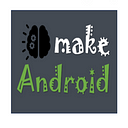What is Scaffold in Jetpack Compose and How to Use It?
I. Introduction
- A brief overview of Jetpack Compose
- Introduction to scaffolding in Jetpack Compose
II. Understanding Scaffold in Jetpack Compose
- Definition and purpose of Scaffold
- Components of Scaffold (TopAppBar, BottomAppBar, FloatingActionButton)
- Role of Scaffold in structuring Compose UI
III. Setting Up Scaffold in Your Compose Project
- Steps to integrate Scaffold into a Compose project
- Configuring TopAppBar and BottomAppBar
- Customization options for FloatingActionButton
IV. Working with Scaffold Elements
- Utilizing TopAppBar for navigation and actions
- Incorporating BottomAppBar for additional app navigation
- Enhancing user experience with FloatingActionButton
V. Advanced Scaffold Customization
- Exploring advanced customization options for Scaffold
- Handling different screen sizes and orientations
- Styling and theming considerations for Scaffold
VI. Common Mistakes and Troubleshooting
- Identifying and resolving common issues with Scaffold
- Tips for troubleshooting Scaffold-related problems
VII. Best Practices for Using Scaffold
- Guidelines for efficient use of Scaffold in Jetpack Compose
- Optimizing app performance with Scaffold
VIII. Real-world Examples
- Showcasing practical examples of Scaffold implementation
- Learning from existing apps using Scaffold effectively
IX. Future Trends and Updates
- Potential enhancements and updates related to Scaffold in Jetpack Compose
- Staying informed about the latest developments
X. Conclusion
- Summarizing the key points discussed in the article
XI. FAQs
. Common questions about Scaffold in Jetpack Compose and their answers
What is Scaffold in Jetpack Compose and How to Use It?
Jetpack Compose, the modern Android UI toolkit, has revolutionized the way developers create user interfaces. One of its integral features is the Scaffold, a powerful tool that simplifies the structuring of Compose UIs. In this article, we will delve into the intricacies of Scaffold, exploring its components, implementation, and advanced customization options.
I. Introduction
Jetpack Compose, introduced by Google, has brought a paradigm shift to Android app development. It allows developers to build UIs using a declarative syntax, making the process more intuitive and efficient. Within the vast toolkit that Jetpack Compose offers, Scaffold emerges as a crucial element for creating well-organized and aesthetically pleasing user interfaces.
II. Understanding Scaffold in Jetpack Compose
Definition and Purpose of Scaffold
Scaffold acts as a foundational structure for Compose UIs, providing a layout that includes essential components like the TopAppBar, BottomAppBar, and FloatingActionButton. Its primary purpose is to streamline the development process by offering a standardized layout that can be easily customized.
Components of Scaffold
Scaffold consists of key components, each serving a distinct purpose:
- TopAppBar: Positioned at the top of the UI, it often contains app title, navigation actions, and other relevant items.
- BottomAppBar: Placed at the bottom, it typically houses navigation icons and other contextual actions.
- FloatingActionButton: A floating circular button for primary user actions, such as adding a new item or navigating to a critical section of the app.
Role of Scaffold in Structuring Compose UI
Scaffold plays a pivotal role in organizing the UI structure. It ensures consistency across different screens of the app, making navigation and user interaction more intuitive. By providing a predefined layout, Scaffold simplifies the process of creating visually cohesive and user-friendly interfaces.
III. Setting Up Scaffold in Your Compose Project
Integrating Scaffold into your Compose project is a straightforward process. Follow these steps to get started:
- Add Dependencies: Update your project’s build.gradle file to include the necessary dependencies for Jetpack Compose.
implementation "androidx.compose.material:material:$compose_version"Initialize Scaffold: Create a Compose function for your main screen and initialize Scaffold within it.
@Composable
fun MainScreen() {
Scaffold(
// Scaffold configuration goes here
) {
// Content of your main screen
}
}Configure TopAppBar and BottomAppBar: Customize the TopAppBar and BottomAppBar according to your app’s design and navigation requirements.
Scaffold(
topBar = {
TopAppBar(
title = { Text(text = "My App") },
// Additional configurations
)
},
bottomBar = {
BottomAppBar(
// Configuration for bottom app bar
)
}
) {
// Content of your main screen
}Add FloatingActionButton: If your app requires a FloatingActionButton, include it within the Scaffold.
Scaffold(
floatingActionButton = {
FloatingActionButton(
onClick = { /* Handle click action */ },
// Additional configurations
) {
// FloatingActionButton content
}
}
) {
// Content of your main screen
}IV. Working with Scaffold Elements
Utilizing TopAppBar for Navigation and Actions
The TopAppBar serves as the primary navigation and action hub in many apps. Customize it to include app title, navigation buttons, and actions relevant to the current screen.
TopAppBar(
title = { Text(text = "My App") },
navigationIcon = {
// Handle navigation icon click
},
actions = {
// Additional actions go here
}
)Incorporating BottomAppBar for Additional App Navigation
The BottomAppBar complements the TopAppBar by providing additional navigation options and actions. Customize it to enhance the overall user experience.
BottomAppBar(
// Configuration for bottom app bar
)Enhancing User Experience with FloatingActionButton
The FloatingActionButton is a key element for user interactions. Use it to highlight primary actions and provide a smooth user experience.
FloatingActionButton(
onClick = { /* Handle click action */ },
// Additional configurations
) {
// FloatingActionButton content
}V. Advanced Scaffold Customization
Exploring Advanced Customization Options for Scaffold
While the basic setup of Scaffold is essential, advanced customization options allow developers to tailor the UI to specific design requirements. Explore these options to elevate the visual appeal of your app.
Handling Different Screen Sizes and Orientations
Ensure your app remains visually appealing on various devices and screen orientations by configuring Scaffold to adapt dynamically.
Styling and Theming Considerations for Scaffold
Consistent styling and theming contribute to a cohesive user experience. Customize the look and feel of Scaffold components to align with your app’s design language.
VI. Common Mistakes and Troubleshooting
Identifying and Resolving Common Issues with Scaffold
As with any development tool, pitfalls may arise. Learn to identify and address common mistakes when working with Scaffold to ensure a smooth user experience.
Tips for Troubleshooting Scaffold-Related Problems
Troubleshooting is an integral part of development. Follow these tips to efficiently address any issues related to Scaffold in your Jetpack Compose project.
VII. Best Practices for Using Scaffold
Guidelines for Efficient Use of Scaffold in Jetpack Compose
Adopting best practices is crucial for optimizing the performance of your app. Follow these guidelines to make the most of Scaffold in Jetpack Compose.
Optimizing App Performance with Scaffold
Strive for a balance between visual appeal and performance. Implement strategies to optimize app performance while leveraging the capabilities of Scaffold.
VIII. Real-world Examples
Showcasing Practical Examples of Scaffold Implementation
Explore real-world applications that effectively use Scaffold to create intuitive and visually pleasing user interfaces. Learn from successful implementations and adapt them to your project.
Learning from Existing Apps Using Scaffold Effectively
Study existing apps that have mastered the art of utilizing Scaffold. Identify patterns and techniques that contribute to a seamless user experience.
IX. Future Trends and Updates
Potential Enhancements and Updates Related to Scaffold in Jetpack Compose
Stay ahead of the curve by exploring potential enhancements and updates related to Scaffold in Jetpack Compose. Be prepared to adapt your implementation to leverage new features and improvements.
Staying Informed About the Latest Developments
Subscribe to relevant channels, forums, and documentation to stay informed about the latest developments in Jetpack Compose. Being proactive will help you embrace new features as they are introduced.
X. Conclusion
In conclusion, Scaffold in Jetpack Compose offers a robust framework for structuring user interfaces efficiently. By understanding its components, implementing best practices, and exploring advanced customization options, developers can create visually stunning and user-friendly apps.
XI. FAQs
Q1: What is the primary purpose of Scaffold in Jetpack Compose?
A1: Scaffold serves as a foundational structure for Compose UIs, providing a standardized layout with components like TopAppBar, BottomAppBar, and FloatingActionButton.
Q2: How can I customize the appearance of TopAppBar and BottomAppBar?
A2: Customize TopAppBar and BottomAppBar by configuring their properties within the Scaffold function in your Compose project.
Q3: Are there any common mistakes when working with Scaffold?
A3: Yes, common mistakes include misconfiguring components and overlooking styling considerations. Refer to the article for tips on troubleshooting and best practices.
Q4: Can I use Scaffold for apps with different screen sizes?
A4: Yes, Scaffold is adaptable to various screen sizes. Explore the advanced customization section for tips on handling different screen dimensions.
Q5: Where can I find real-world examples of apps using Scaffold effectively?
A5: The article provides insights into real-world examples and encourages studying existing apps to enhance your understanding.
Connect with me👇🏻
Thanks for Reading!
Please comment with questions and suggestions!! If this blog is helpful for you then hit Please hit the clap! Follow on Medium, Please Follow and subscribe to Make Android for prompt updates on Android platform-related blogs.
Thank you!

